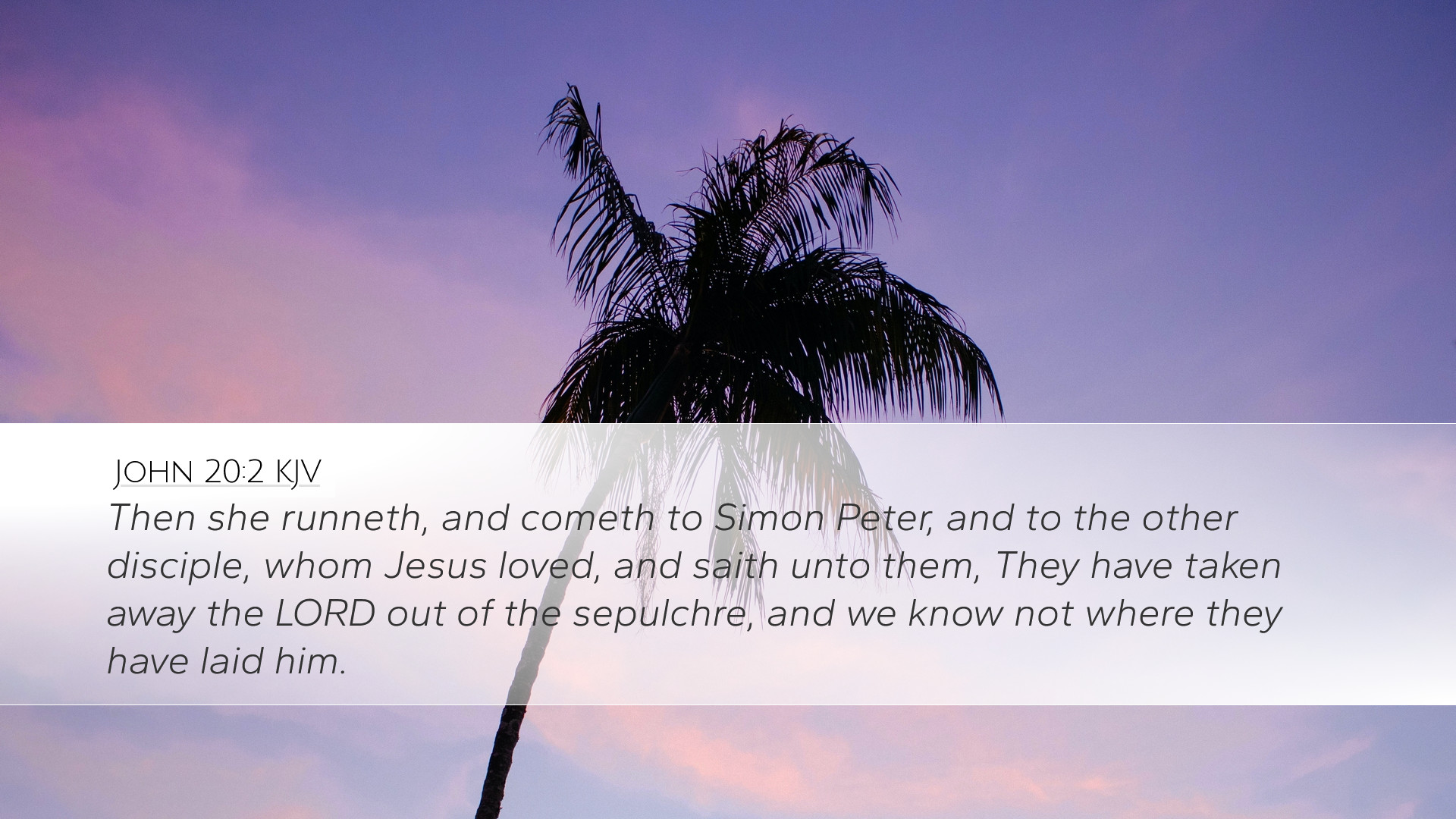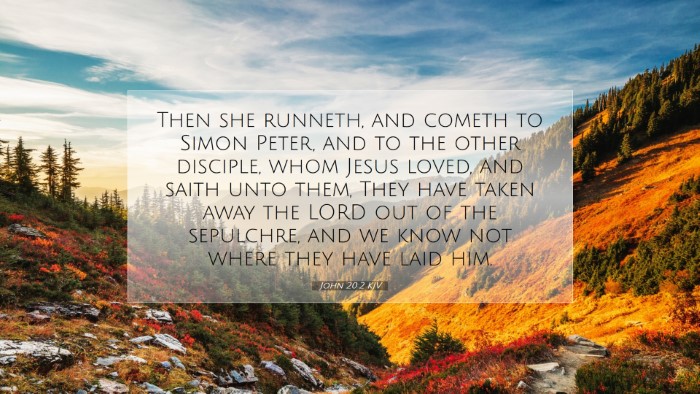Commentary on John 20:2
John 20:2 states:
"Then she ran and came to Simon Peter, and to the other disciple, whom Jesus loved, and said to them, 'They have taken away the Lord out of the tomb, and we do not know where they have laid Him.'" (NKJV)
Contextual Overview
This verse occurs in the context of the resurrection of Jesus Christ. After the crucifixion, early on the first day of the week, Mary Magdalene discovers the empty tomb and rushes to inform Peter and the beloved disciple. John, the author of this Gospel, introduces key themes of faith, witness, and the response to the resurrection.
Insights from Public Domain Commentaries
Matthew Henry's Commentary
Matthew Henry observes that Mary’s approach to the tomb embodies the natural human response to loss and grief. Her quick response in seeking the body of Christ underscores her devotion and distress. Henry notes that:
- Mary's intent is not to celebrate a victory but to mourn the loss of her Lord.
- The phrase "they have taken away the Lord" reflects her understanding of the situation as one of grave concern, indicating her deep attachment to Jesus.
- Henry emphasizes Mary's boldness in going to the disciples, pointing to her role as an integral witness in the resurrection narrative.
Albert Barnes' Notes on the Bible
Albert Barnes provides a detailed examination of the nuances in Mary’s words. He points out that:
- The term "beloved disciple" refers to John himself, which establishes a personal connection within the narrative.
- Her declaration "we do not know where they have laid Him" indicates a profound sense of confusion and despair, highlighting an absence of understanding regarding Jesus' prophecy of His resurrection.
- Barnes also reflects on the role of women in the resurrection story, underscoring Mary's importance as the first to discover the empty tomb, thus affirming women’s significant contributions in the early church.
Adam Clarke's Commentary
Adam Clarke elaborates on the urgency in Mary's actions, suggesting that:
- Her running to the disciples shows a transition from despair to the hope of finding answers, indicative of a deep-seated faith even amid confusion.
- He notes the implication of communal discovery, as she refers to "we do not know," emphasizing shared grief and the necessity of fellowship during trials.
- Clarke also critiques the initial misunderstanding of the resurrection. He posits that Mary’s interpretation ascribing the theft of the body reflects a common struggle in early faith, grappling with the miraculous.
Theological Implications
The theological threads interwoven within this verse point to the immediacy of revelation and the nature of faith:
- The Role of Witness: Mary's visit to the tomb signifies the importance of personal encounters with the risen Christ. Her immediate response becomes a foundation for the collective witness of the resurrection.
- Faith and Doubt: Mary's confusion and her run to the disciples illustrate a key aspect of faith, which often coexists with doubt and need for understanding.
- Communal Journey: The use of "we" emphasizes that the journey of faith is not solitary; it requires community support and dialogue as believers seek truth together.
Conclusion
In summary, John 20:2 serves as a pivotal moment that highlights human emotional response in the face of loss, the urgency of conveying the truth, and the profound role of women in the resurrection narrative. Each perspective offered by the esteemed commentators contributes richly to our understanding, emphasizing the interplay of despair and hope, bewilderment, and the gradual dawning realization of Christ's victory over death.


